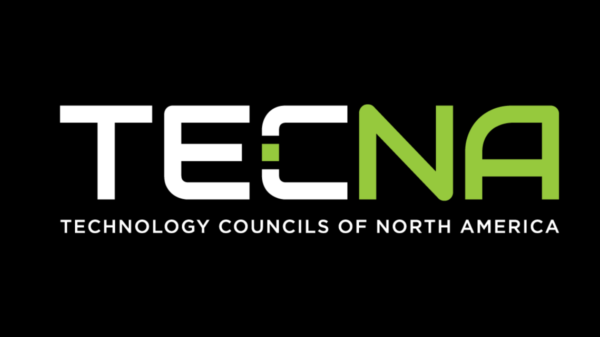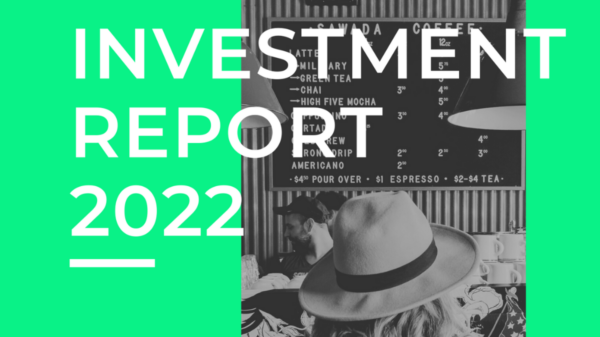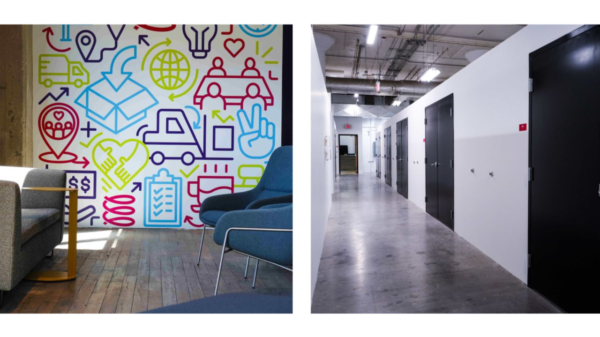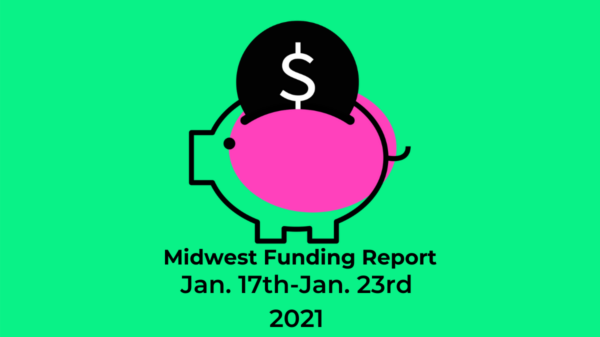Few ecosystem builders are more knowledgeable about the economic growth and development of rural places than Don Macke. In the following article published on his blog and shared with us, Don describes the ten trends that are affecting rural America. He uses great examples from his home state of Nebraska throughout the piece to illustrate how these global trends are affecting the Middle and particularly, rural America.
There are many mega trends influencing our world’s economies, societies and even cultures. We have tapped our national network to identify the top ten mega trends we believe are particularly relevant to rural community economic development in this part of the 21st century, including:
- 1. Globalization
- 2. Automation
- 3. Outsourcing
- 4. Offshoring
- 5. Information Technology
- 6. Electronic Commerce
- 7. Economic Concentration
- 8. Urban America is Filling Up
- 9. Rural Migration Trends
- Intergeneration Transfer of Wealth
We begin our exploration of rural relevant mega trends with increasing globalization.
Global Pandemics
The COVID-19 pandemic has reminded us once again that our world can be fundamentally threatened and impacted by global health pandemic events. The world’s last pandemic (the Spanish Flu) killed millions in 1918. COVID-19 is fundamentally changing our lives and is driving economic contractions throughout much of the world. Unlike regional epidemics like Ebola (e.g., concentrated in parts of Africa), COVID-19 is spreading through the more developed parts of the world caused by international travel. While not among our top ten rural relevant mega trends, the prospect of more global health pandemics is part of our new reality going forward.
1 – Globalization
Globalization is a powerful force. With improvements in transportation, trade, telecommunications and the lack of world wars, globalization has created a more international marketplace, economy and even society. Global interaction is at a high level and articulation within the world economy and society is very strong. From a traditional development perspective, globalization has created more competition threatening once protected local industries and sectors. The upside with globalization is rural America now has access to global markets, talents, and development opportunities.
Global Markets, Talent and Opportunities
While critics of globalization and international trade appropriately highlight the downsides and even adverse impacts of these trends, the counterpoint is how globalization and international trade have opened up new global markets, increased the exchange of talent and created a whole new set of development opportunities for rural America. In my home state of Nebraska, commodity production agriculture and the technology that enables it is king; this very rural state is deeply connected to international trade exporting not only commodities, but manufactured goods, agriculturally related services, and knowledge. At the Institute of Agriculture and Natural Resources within the University of Nebraska, students from throughout the world come to Nebraska to learn about agriculture.
2 – Automation
Automation has been with us since the first Industrial Revolution when machines and technology began to displace human labor. Automation continues today as technological innovation drives the substitution of machines for people in the workplace. Rapid development in information technology, biotechnology and now artificial intelligence ensures this force will be active in the decades to come. For regions of the country dependent on labor intensive and lower skill workforces, automation is a force similar to the automobile replacing the horse and buggy. While offshoring (moving operations outside of the United States) is rightfully blamed for the decline of entire industries, automation is possibly a larger driver. Automation in the coal fields has destroyed as many or more coal jobs as government regulations.
Counter Point of View
In this paper we focus on how megatrends have contributed to economic and social restructuring that often has been destructive. We must also keep in mind that these same trends are also creating opportunities. Artificial intelligence is a case in point. While natural resource industries like agriculture, mining, energy production and the like are automating reducing the need for certain kinds of labor (e.g., dislocating and often marginalizing workers), these same technologies are also improving productivity, competitiveness and health and safety. The development of smart center pivot irrigation has eliminated human work associated with more labor-intensive ditch irrigation, but this displacement is resulting in dramatic reductions in water use and waste. From an entrepreneurial standpoint – for every threat there is often opportunity. Check out e2’s associated paper Economic Crashes, Mini-Case Studies for additional information.
3 – Outsourcing
In a market economy ventures are constantly looking for efficiency and effectiveness strategies. One of these strategies is outsourcing or moving work from legacy employees (e.g., full-time, benefited and life-long workers) to contractors. For example, when a corporation has legacy maintenance workers, they generally offer higher compensation, similar benefits to white-collar workers and assumed life-long employment compared to contract maintenance workers with their lower costs and obligations (e.g., retirement, health insurance, etc.). The contractor may offer lower wages, limited benefits, and work with a business model where turnover is acceptable. Outsourcing is a two-edged sword. It destroys higher quality jobs and careers, but it also creates entrepreneurial opportunities for contractors.
The Gig Economy
The gig economy is becoming part of our language globally. In the gig economy, independent workers are compensated based on each piece of work they complete. There are significant benefits with a gig economy with respect to choice, flexibility, mobility, and the like. There are also downsides related to income insecurity, lack of access to critical benefits like health insurance and retirement, and the basic lack of economic power. If you are a gig economy worker tied to Amazon, you have relatively little power to ensure a fair deal as Amazon pursues profit optimization. Bottom line, whether gig workers recognize themselves as entrepreneurs or not, they should. By growing entrepreneurial talent in the gig economy space, we have the opportunity to ensure that gig workers have greater economic success.
4 – Offshoring
With globalization and international trade, offshoring is a powerful force impacting certain industries and regional economies. As companies move economic activity outside of the United States, we can see dramatic contraction in regional economic activity measured in the loss of millions of jobs (e.g., think apparel, textiles, automobiles, furniture, etc.). The emerging “nationalism” and “protectionism” movements in America, Europe and other global locations is a push back against globalization, international trade, and offshoring. However, the strong global economic and social interconnectedness will be hard to stop and offshoring of certain economic activities (e.g., for America lower value economic activities) is likely to continue.
5 – Information Technology
Dramatic improvements in information technology (e.g., worldwide web, smart devices, applications, etc.) has transformed the way we work, live and play. These technologies have reduced barriers and isolation in ways that better roads and motor vehicles never did. Information technology is a two-way opportunity and threat. On the one hand information technology has allowed platforms like Amazon to compete with local retailers. Conversely, this same technology can allow an entrepreneur in rural America to reach markets globally in ways as never before possible.
eCommerce and Rural America
Misko Sports located on the town square in Ord, Nebraska (population 2,103 in 2017) began as a saddle and tack shop in the 1880s. For 120 years this business has been a mainstay in this rural community in north central Nebraska. Recently the ownership of Misko Sports passed on to a 20-something couple. Thomas and Megan now run a retail store that is thriving. But 80% of their business is done through eCommerce in a multi-county market region. In rural America today a hybrid venture model like Misko Sports is increasingly common and represents an opportunity to use the technologies that bring external competitors into rural markets to reach external opportunities.
6 – Electronic Commerce
Advances in information technology has enabled the rise of electronic or eCommerce. eCommerce is growing rapidly and creating an amazing range of niche markets (i.e., product and custom pairings). As never before markets and customers are now virtual. There are now millions and millions of niche markets with producers and consumers connecting via the web. The ability to find a good or service is expansive. Opportunities to cultivate niche markets have relatively low barriers to entry. eCommerce is challenging traditional brick and mortar retail and service businesses, but also opening new horizons for entrepreneurial ventures.
7 – Economic Concentration
The next economic restructuring driver we want to highlight is increased economic concentration in the United States. This is a national mega trend. The board game Monopoly was created in an era of American history where economic concentration was high, growing and feared. In recent years the United States has been experiencing rapid economic concentration through acquisition and buyouts. Entire industries, from banking to retailing to energy to pharmaceuticals have experienced increased concentration. Some would argue that the perceived erosion of entrepreneurship in the United States is rooted in increased economic concentration. At the same time, we have counter trends where new ventures are finding niche markets that were neglected or abandoned by mega companies. See our paper Is American Entrepreneurship Declining?
ALLO Communications
ALLO Communications is a startup that is less than a decade old. It was created by two friends in the farm-centered and rural community of Imperial, Nebraska (southwestern Nebraska, 2017 population of 2,062). ALLO started in Imperial because the founders lived in Imperial and had firsthand knowledge of the poor and high-cost service of incumbent telephone companies serving this corner of America. They believed they could do better and beat the big names in telecommunications. ALLO proved right and grew rapidly in the rural Great Plains. More recently it has moved into the more competitive markets of Lincoln and Omaha, Nebraska with amazing success. ALLO is an example of how new entrepreneurial ventures can succeed even when there is economic concentration.
8 – Urban America is Filling Up
America is a big place, yet parts of urban America are filling up resulting in very high costs of living and doing business environments. Issues of congestion, environmental quality, crime, and other factors are further conditions driving up the price to live, work and play in America’s cities. These forces are huge and create opportunities for rural America. The inset below – Santa Fe to Monte Vista – illustrates this dynamic. This is not just a national mega trend; it is also playing out in other parts of the world where the same dynamics are at work.
Santa Fe to Monte Vista
A few years ago, e2 was doing a lot of work in the American southwest. We observed a really interesting pattern relevant to the theme of Urban America is Filling Up. From the mountains to the south of Santa Fe to the mountain ranges forming the San Luis Valley in Colorado, there is the historic region with deep Native American, Spanish, Mexican and now multicultural arts. Santa Fe is the epicenter of this rich arts and culture scene. Taos is a unique but mini version of Santa Fe. If you are an emerging artist, chef, writer, poet, and the like wanting to be part of this rich artistic culture and environment, the cost thresholds in Santa Fe and Taos may be too rich for the pocketbook. A quick look at current median housing costs illustrates our point:
- Santa Fe $400,000
- Taos $321,000
- Monte Vista, CO $139,000
Santa Fe is nearly 3 times more expensive than Monte Vista!
If you are an artist desiring a building where you could house a gallery, a creative workspace, and a place to live, a building in Santa Fe or Taos will run in the hundreds of thousands of dollars into the millions. Conversely, throughout this region there are struggling small cities, towns and villages with remarkable historic building stock and spaces. Monte Vista is one of those places where today the downtown is filled with artists and galleries. These creative people can be part of the Santa Fe and Taos culture scene, but their costs are dramatically lower in Monte Vista. Throughout this region artists, writers and the others are locating in lower-cost communities because Santa Fe and Taos are filling up from a cost standpoint.
9 – Rural Migration Trends
For decades the predominant migration trend was from rural to urban America. By and large this rural to urban trend continues but the scale and pace is slowing down as rural America is emptying out and reaching steady state (e.g., a balance between economic opportunity and population needs). In two generations the population balance between metropolitan and non-metropolitan America has shifted dramatically moving political and market power from rural to urban America. Yet, there are two very important counter migration trends where urbanites are moving to more rural places:
The 30-Year-Olds.The first of these trends, documented by Ben Winchester at the University of Minnesota, Randy Cantrell at the University of Nebraska, and others, includes younger adults often referred to as “The 30-year-olds.” Someone may grow up rural and even urban, experience post-secondary education, early career work and life, and as family formation begins to become important, migrate back or to rural areas. This is a huge national trend for rural America and for those rural communities genuinely attractive for this migrating cohort.
Lessons from Ord, Nebraska
For much of rural America that is not urban adjacent, chronic, and severe net outmigration and depopulation is threatening the very vitality of our rural communities. Each year we wait with dread the annual Census population estimates anticipating not whether there would be population declines, but how big of a decline. For two decades the remarkable community of Ord has focused on a comprehensive development strategy including new resident attraction with a particular focus on 25- to 45-year-olds. In the most recent Census decade (e.g., 2000 to 2010) Ord posted a 50% increase in that all-important age cohort of 30-year-olds. This is remarkable by Central Great Plains Standards and has fueled Ord’s transformation from a declining community in crisis in the 1990s to a thriving rural entrepreneurial community in the 2010s. To learn more about Ord’s remarkable transformation, check out our paper Ord, Nebraska – An Entrepreneurial Community.
Retiring Boomers. The research is less documented, but our field observations are clear, there is also a counter migration trend where retiring Boomers are moving from urban to rural America. These moving Boomers are driven by high costs in urban America and lower costs in rural America, congestion, crime and often the desire to come home. Regardless of the motivation and the actual size of Boomer migration, this national trend is real and represents massive opportunities for those rural regions and communities positioned to catch and ride this opportunity wave.
Wicked Weather
Climate change is a politically charged topic in the United States. But worldwide and among the world’s scientists, there is overwhelming agreement that climate change is real and driving wicked weather (e.g., major weather events like droughts and huge rainfall events) and represents a fundamental threat to the very existence of the human species if unchecked. Climate change will drive weather patterns like temperatures, moisture and weather extremes impacting key industries like production agriculture. We have not included wicked weather and climate change among our top 10 mega trends, yet as we progress over the next 50 years, tracking how climate change impacts different regions of rural America will be an important consideration.
10 – Intergenerational Transfer of Wealth
America is now in the midst of the greatest intergenerational transfer of wealth in our history. In 2019 U.S. household current net worth (e.g., assets minus liabilities) reached nearly $114 trillion. Actually, we believe the number is conservative in that it does not fully account for wealth associated with closely held businesses from small, family-owned corporations to main street mainstays to farms. This is a record and each year some of this wealth is being transferred to heirs, charities, and other purposes. Over 100 years ago with formation of the first community foundation in Cleveland, Ohio, community philanthropy is seeing amazing growth. Today’s community philanthropy is moving beyond grantmaking for community betterment to strategic grantmaking and even impact investing. As government, corporate and large foundations are pulling back in their support for rural community economic development, community philanthropy is growing, creating new sources of funding, leadership, and energy to build a new generation of prosperity and entrepreneurial communities.
Nebraska Community Foundation
About a generation ago the idea of a community foundation serving rural communities in Nebraska was just a dream. Today the Nebraska Community Foundation is one of the most powerful forces for rural community building in the Cornhusker State. The most recent 2019 statistics are compelling:
● 236 Affiliate Funds serving 260 communities covering 81 of Nebraska’s 93 counties.
● $190 million in total assets with endowed assets of nearly $119 million.
● Based on 332 planned gifts, an additional $61.3 million in anticipated new assets.
● Over the past five years 44,476 contributions have been made.
● Most of this growth has occurred in the past decade and particularly the last five years.
Across America community philanthropy is growing and becoming central to the future of thousands of rural communities and regions across America. Community philanthropy offers an important under-developed resource to support rural community economic development. Check out our paper, Entrepreneurship and Community Philanthropy for additional detail.
Conclusion
A key to the future of rural communities and regions across America is understanding the larger world environment. Universities, larger foundations, government organizations, nonprofit think tanks and similar groups are focusing on these and other trends. It is of paramount importance that the development leadership in every rural community and region make time to avail themselves to these learning opportunities, and in turn, bring this information home. Ignorance drives poor decisions and even failure. Smart and informed communities have the potential to thrive while the inverse is true for those that do not.
We love hearing from local voices (that are not us). We stumbled upon this blog post looking for something else and were delighted to receive permission to share it. We hope that you visit Don’s blog regularly. We also hope that those of you with local blogs, let us know when you are publishing a particularly good editorial or commentary because we would love to share those thoughts with our readers. Thanks again – Don.

e2 Entrepreneurial Ecosystems helps communities increase prosperity through entrepreneur-focused economic development and ecosystem building. Led by Don Macke, e2 has a national team of practitioners who bring research, coaching, incubation, market intelligence and other expertise to this work.










































